Business Correspondence Training Course In Norway
Our corporate training course is also available in Oslo, Bergen, Stavanger, Trondheim, Drammen, Fredrikstad, Kristiansand, Sandnes, Tromsø, Sarpsborg, Skien, Ålesund, Sandefjord, Haugesund, Tønsberg, Moss, Porsgrunn, Bodø, Arendal, Hamar, Ytrebygda, Larvik, Halden, Lillehammer, Mo i Rana, Molde, Horten, Gjøvik, Askøy, Kristiansund, Flåm, Geiranger, Svolvær, and Kirkenes.
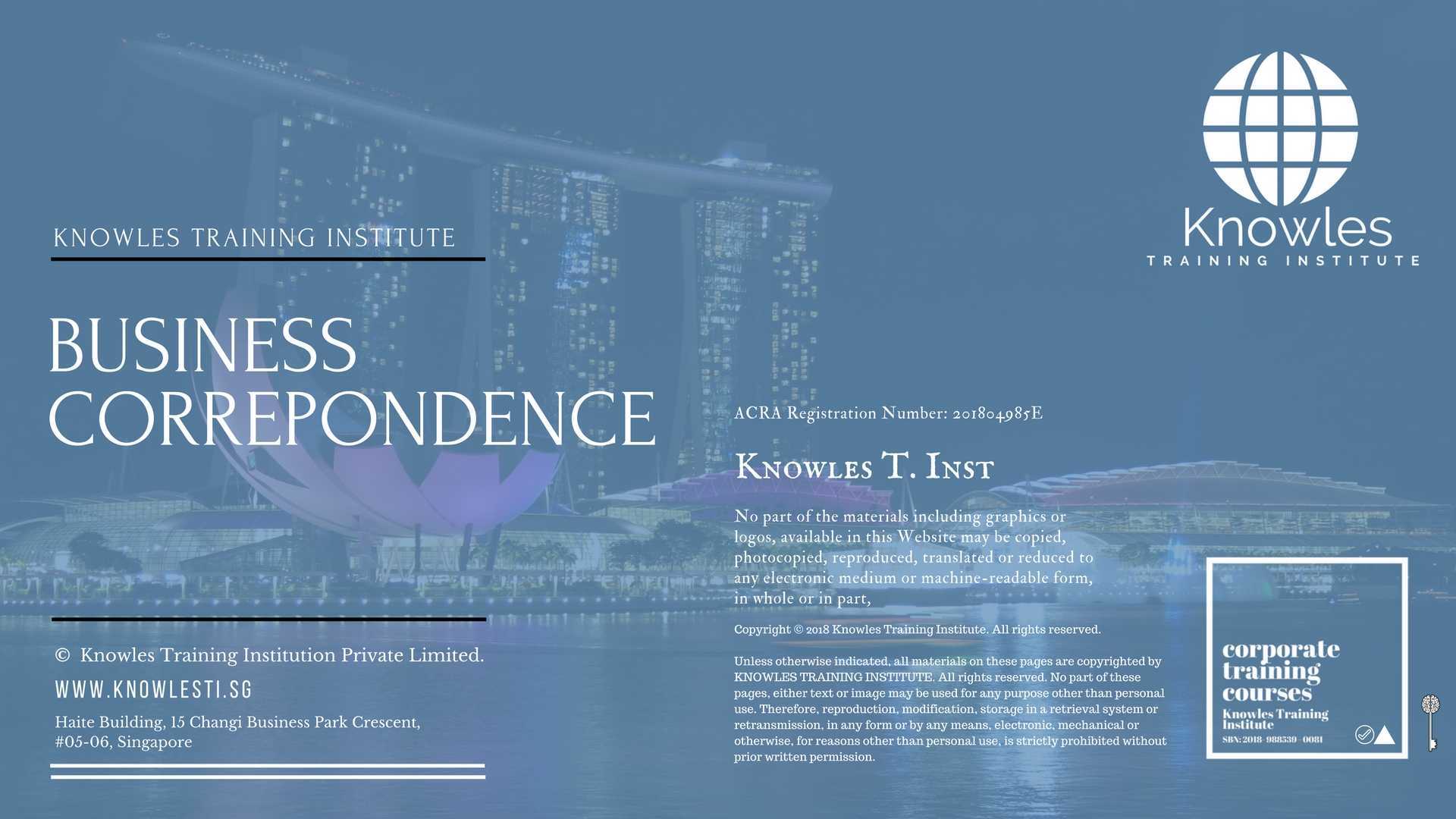
About This Business Correspondence Training Course in Norway
Business Correspondence Course in Norway
Business Correspondence is the act of communicating properly and politely with business clients and customers. Exchanging information through Business Correspondence is usually written through letters and electronic mail, and it can involve communication within or outside of the business. Business Correspondence builds the first impression of others, yet business professionals often disregard this simple skill.
Learning how to do Business Correspondence is a must for business professionals seeking to develop their professional image. Business Correspondence helps build the skills needed for effective business writing.
In this Business Correspondence course in Norway, participants will learn how to follow business standards in communicating with clients, customers, and business professionals. This course will also tackle the context of business correspondence, and its intricacies which need to be taken into account.
Who Should Attend This Business Correspondence Course in Norway Workshop
This Business Correspondence Course in Norway workshop is ideal for anyone who would like to gain a strong grasp and improve their Business Correspondence.
All Staff Within An Organisation
Managers
Team Leaders
Executives
Assistants
Officers
Secretaries
Group Size For This Business Correspondence Training Program in Norway
The ideal group size for this Business Correspondence course in Norway is:
Minimum: 5 Participants
Maximum: 15 Participants
Course Duration For This Business Correspondence Skills Course in Norway
The duration of this Business Correspondence Course in Norway workshop is 2 full days. Knowles Training Institute Norway will also be able to contextualised this workshop according to different durations; 3 full days, 1 day, half day, 90 minutes and 60 minutes.
2 Full Days
9 a.m to 5 p.m
Business Correspondence Course in Norway Benefits
Below is the list of course benefits of our Business Correspondence course in Norway
Learn how to write formal business letters and communications
Develop formality and professionalism in business writing
Professionalize business writing practices
Perform business writing with ease
Obtain skills needed for performing effective business communication
Business Correspondence Course in Norway Objectives
Below is the list of course objectives of our Business Correspondence course in Norway
Identify basic principles of effective business writing
Understand what principles are followed in effective business writing
Utilize principles of effective business writing in drafting correspondence
Write business communications clearly
Ensure completeness of details presented in correspondences
Apply the correct tone in writing correspondences and replies
Develop proper business writing habits
Implement protocols in dealing with business inquiries and messages
Understand how to make follow-up requests or inquiries
Identify when not to use email in correspondences
Evaluate existing business writing practices
Create effective business correspondences to promote a professional image
Course Content For This Business Correspondence Training Course in Norway
Below is the list of course content of our Business Correspondence training course in Norway
Principles of Effective Business Writing
Identifying Common Mistakes
Check for Grammatical Errors
Keep the Content Clear and Simple
Ensure Accurate Details
Politeness and Respect Using Tone
Business Correspondence in Context
When not to use Email for Correspondences
Urgency in Communications and Correspondences
Dealing with Protocols and Customs
Handling Follow-Up Inquiries
Workshops: Writing and Editing Correspondences
Copywriting Correspondences using Effective Business Writing
Writing a Sample Business Correspondence
Best Practices in Writing Correspondences
Business Correspondence Course in Norway Value Added Materials
Each participant will receive the following materials for the time management course in Norway
Business Correspondence Course in Norway Learner’s Guide
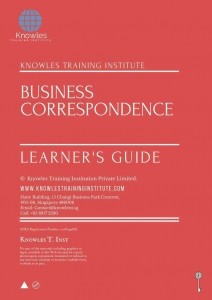
Business Correspondence Course in Norway Handouts
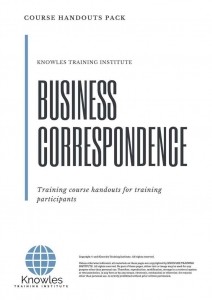
Business Correspondence Course in Norway PPT Slides Used During Course
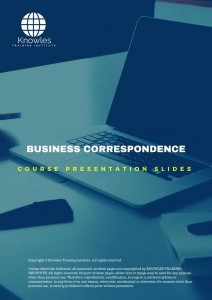
Business Correspondence Course in Norway Certification
Each course participant will receive a certification of training completion
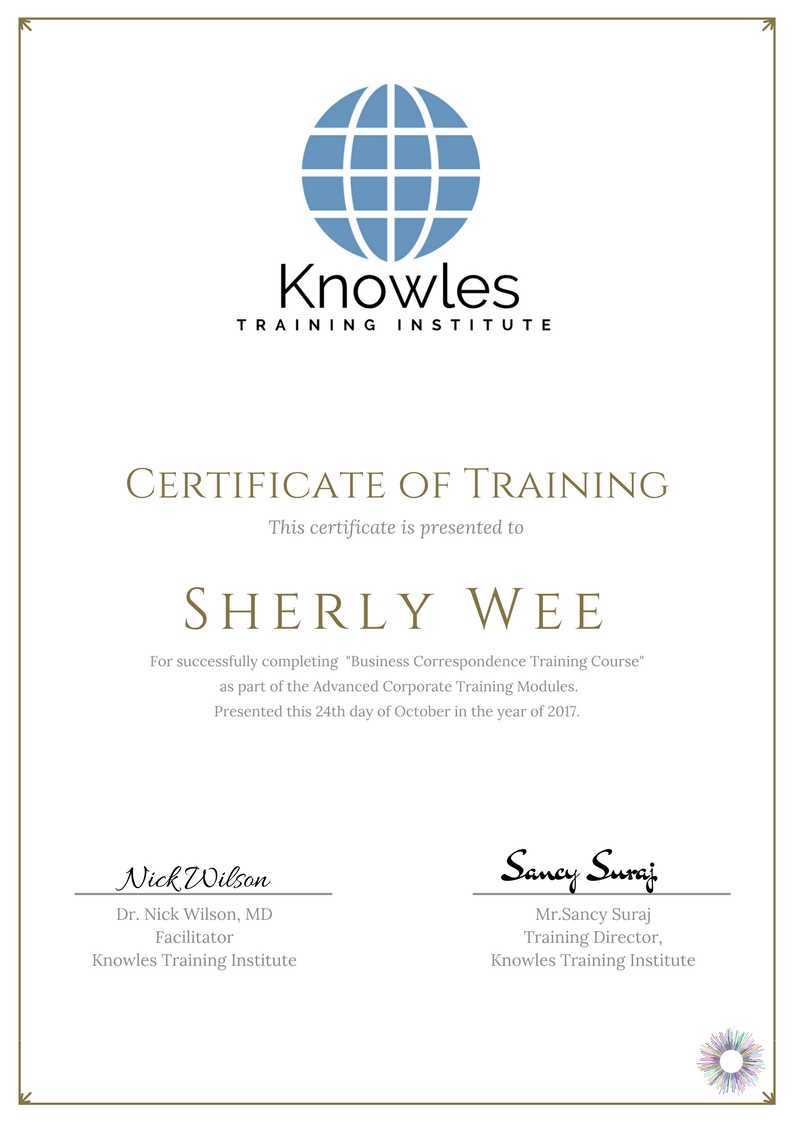
Course Fees For Business Correspondence Course in Norway
There are 4 pricing options available for this Business Correspondence training course in Norway. Course participants not in Norway may choose to sign up for our online Business Correspondence training course in Norway.
- USD 679.97 For a 60-minute Lunch Talk Session.
- USD 289.97 For a Half Day Course Per Participant.
- USD 439.97 For a 1 Day Course Per Participant.
- USD 589.97 For a 2 Day Course Per Participant.
- Discounts available for more than 2 participants.
Upcoming Business Correspondence Training Course in Norway Schedule
Contact us for the latest Business Correspondence course in Norway schedules:
Email: contact@knowlesti.co.no
Message:
Download Business Correspondence Course in Norway Brochure
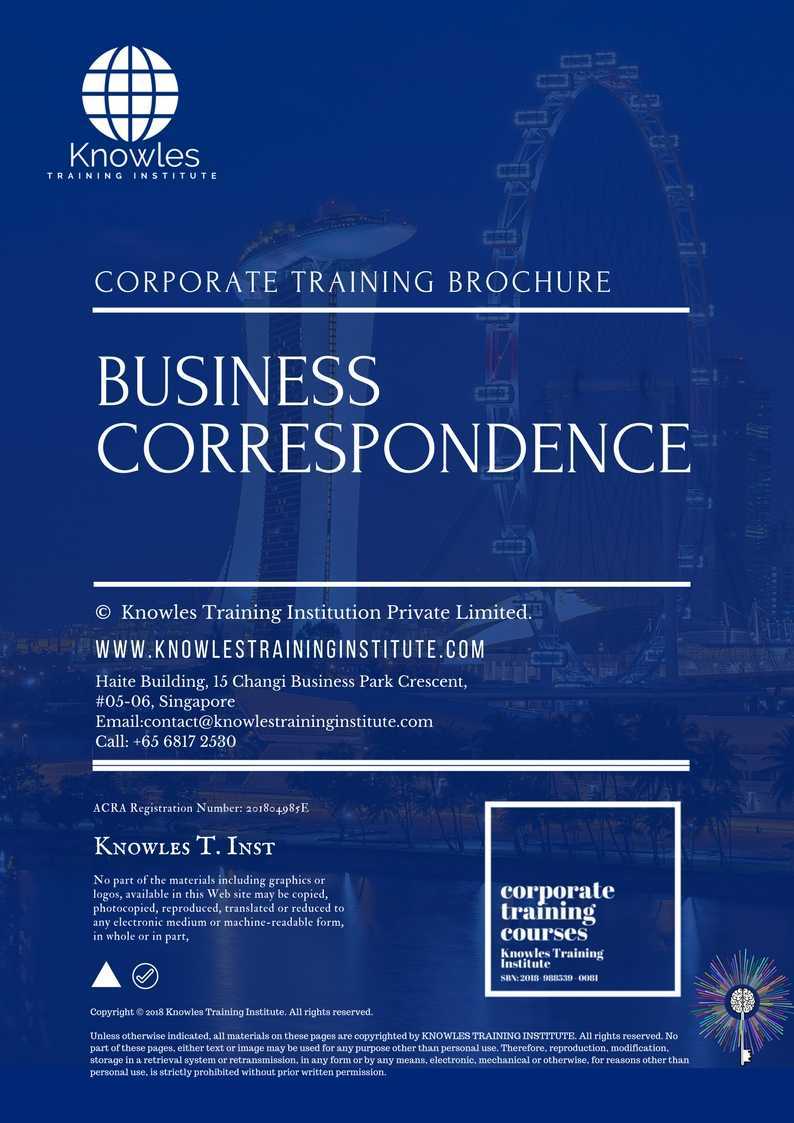
Request for this Business Correspondence course in Norway brochure. Fill up the short information below and we will send it to you right away!
Post Training Support: A vast majority of training does not have any effect beyond 120 days. To work, training has to have a strong pre- and post-training component. Post-training reinforcement helps individuals to recall the understanding and ask questions.
Blended Learning: Learning does not occur in the classroom. Virtually everybody prefers distinct ways of learning. Successful learning should have a multi-channel, multi-modal strategy.
- We Understand The Industry: We’ve got a profound comprehension of the business, business design, challenges, strategy and the that our participants are in and have designed the courseware to cater to their professional needs.
- Course Content: Knowles Training Institute’s material is relevant, of high quality and provide specific learning results. Participants will leave the training course feeling as they have gained a strong understanding and will also be in a position to execute what they have learned sensibly.
Course Development — The workshop modules follow a systematic and logical arrangement. This structure helps to ensure that the course material allows the facilitators to deliver the course in a logical arrangement. Consider the subjects as building bricks into learning, our facilitators slowly build towards a comprehensive picture of this entire topic.
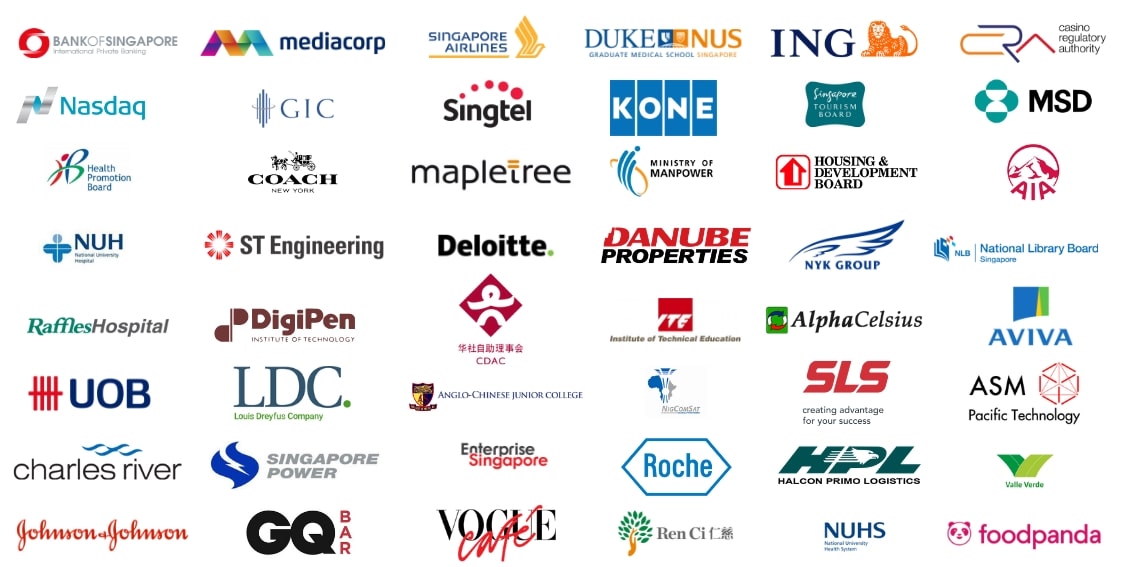
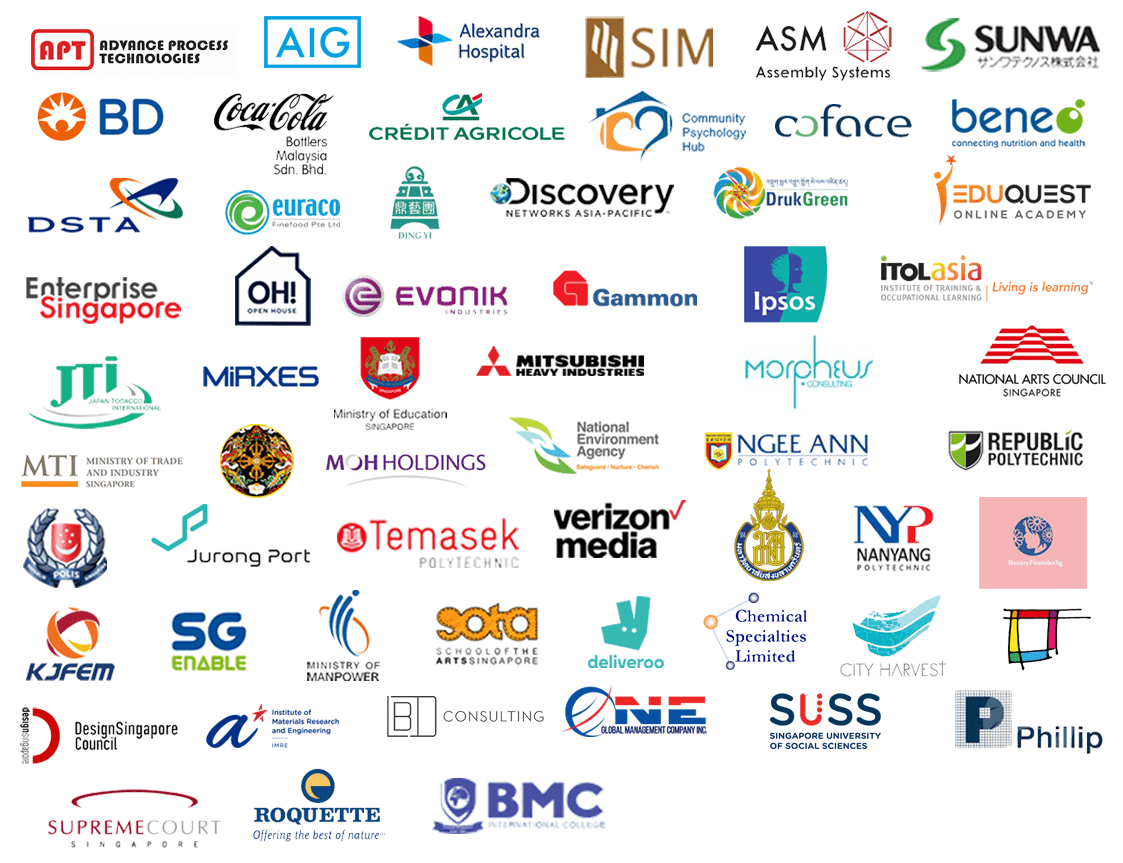
Course Enquiries
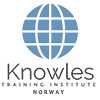
Fill up the form and we will get back to you in less than 1 working day.
Alternatively, give us a call to have one of our training consultants contact you. Our corporate training courses can be contextualized to meet your organization’s training needs. Leverage on our large pool of professional trainers and consultants for your organization’s training needs.
Email: contact@knowlesti.co.no
We Guarantee 100% Privacy. We Respect Your Privacy. Your Information Will Never Be Shared.

